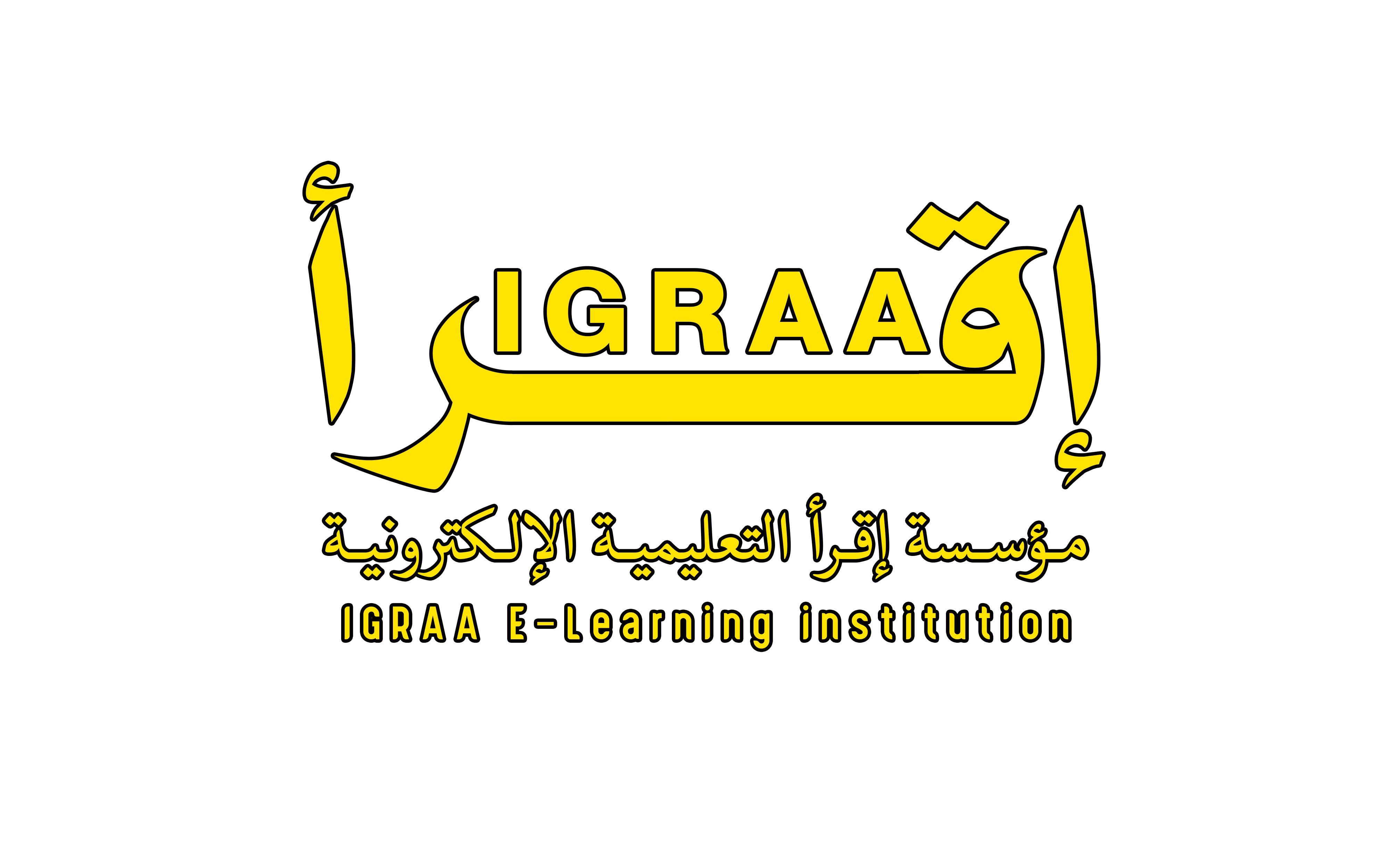e-learning
Online Education :-
It is an innovative method that supports the educational process, transforming it from a model of indoctrination to creativity, interaction, and skill development.
E-learning combines all digital forms of teaching and learning, using the latest methods in the fields of education, publishing, and entertainment, relying on computers, their storage media, and networks.
Rapid developments in technology have led to the emergence of new learning patterns, reinforcing the concept of self-directed learning, where the learner continues learning at his own pace, ability, and previous experience.
E-learning is an advanced form of distance learning that relies primarily on computers and networks to transfer knowledge and skills.
Its applications include online learning, computer-assisted learning, virtual classrooms, and digital collaboration, where lesson content is delivered online, on audiotapes, videos, and CDs.
Definition of e-learning:-
E-Learning is an interactive system provided to the learner using information and communication technologies. It relies on an integrated digital electronic environment that displays curricula via electronic networks, provides means of guidance and direction, organizes tests, and manages and evaluates resources and processes.
The importance of e-learning lies in addressing the knowledge explosion, increasing demand for education, expanding admission opportunities, enabling the training and education of employees without having to leave their jobs, contributing to breaking down psychological barriers between teachers and learners, and meeting learners' needs while increasing the return on investment by reducing the cost of education.
Characteristics of e-learning
The characteristics of e-learning can be summarized as providing digital multimedia content (written or spoken texts, sound effects, graphics, still or moving images, video clips) via computers and their networks, so that these media are integrated to achieve specific educational objectives.
This learning is managed electronically, providing a range of services and tasks related to managing education and learning, and is less expensive compared to traditional education.
It also enhances the learner's ability to acquire knowledge independently, which achieves interactivity in the educational process (the learner's interaction with the teacher, content, colleagues, educational institution, programs and applications) as it is available at any time and from anywhere.
Synchronous e-learning:-
Synchronous e-Learning is education that takes place in real time, requiring learners to be present at the same time in front of computers to conduct discussions and conversations between the learners themselves and with the teacher, using e-learning tools such as: whiteboards, virtual classrooms, video and audio conferences, and chat rooms.
Its advantages: -
· The learner receives immediate feedback.
· Reduce costs.
· Dispensing with going to school.
Its disadvantages: -
· The need for modern equipment and a good network connection.
Asynchronous e-learning:
Asynchronous e-Learning is non-direct learning, which does not require learners to be present at the same time, as learners can obtain the study at the times that suit them and with the effort they wish to provide.
It uses tools such as email, the web, mailing lists, discussion groups, and FTP.
Its advantages: -
· The learner gets to study at the times that suit him.
· Receive education according to the effort the learner is willing to put in.
· The ability to re-study the material and refer to it electronically as needed.
Its disadvantages: -
· The learner does not receive immediate feedback from the teacher.
· It leads to introversion in education because it isolates it.
Conditions for the Success of E-Learning
In order for this type of education to be successful, there are several conditions for it, including defining the educational objectives that must be achieved, as well as accepting diverse answers, ideas and results, and presenting knowledge rather than communicating and transferring it, in addition to evaluating the educational task rather than evaluating the level of knowledge, which represents the most important condition, along with encouraging distant groups rather than local ones.
Software quality standards: -
Educational objectives: Educational objectives are determined at the beginning of work, and formulated in a clear and measurable manner. The educational strategy that helps in achieving the educational objectives is chosen.
Lesson Interface: The interactive interface is easy to use and helps the teacher diagnose and correct errors. The page content is simple, precise, and uncomplicated. The scientific material is organized with its various elements in an appropriate format. The main ideas are placed at the top of the page, and individual and group activities are included for the learners to perform.
Appearance and appearance: Navigation tools are clear and easily recognizable, and links or connections are distinguished (for example, in a uniform blue color). Texts do not cover more than a third of the screen. It is preferable to use a background with harmonious colors without text, with only one or two types of writing fonts. Do not use more than seven colors on each screen, and use video only when necessary.
Employing e-learning in teaching: -
The auxiliary (complementary) model uses some e-learning techniques as support for traditional education, whether inside or outside the classroom. Examples of its applications before teaching include the teacher directing the student to view a specific lesson on the Internet or on a CD, or the teacher assigning students to search for specific information on the Internet.
The blended model: This model includes the integration of traditional and electronic education, inside the classroom or places equipped with electronic education technologies. It is characterized by combining the advantages of traditional and electronic education, except that the role of the teacher in this case is to guide and manage the educational situation, and the learner’s role is positive.
The pure model uses e-learning as an alternative to traditional education, so that learning can be done from anywhere and at any time by the learner. The network acts as a primary medium for delivering the entire education process. Examples of its applications include independent self-study (the student studies the e-course individually).
The student learns with a group of colleagues, through a lesson or completing a project using collaborative e-learning tools such as chat rooms and forums.
the electronic school
It is an electronic room for online learning, which uses computers and communication networks, with the aim of delivering electronic digital information to learners, whether they are inside or outside the school walls.
Features of the e-school:
The characteristics of an electronic school are represented in achieving education (the educational material is a means and not an end) and transferring the center of the educational system from the teacher to the learner with the continuous development of educational programs and curricula, which is one of its goals. It achieves education that depends on understanding the characteristics of students and taking into account the differences between them.
Electronic school units: -
English: Its units are represented by electronic sections, which are a group of activities, similar to the activities of a traditional section, carried out by the teacher and student together at the same time, regardless of their locations. The electronic course is a course whose design uses computer-based educational activities and materials. It is a content rich in interactive multimedia components in the form of software approved or not approved on a local network or the Internet. The process of producing electronic courses is subject to a set of standards, the most important of which is the (ADDIE) standard, which has received great attention in the process of producing courses. This process goes through three stages: First: Development, whereby developers work to transform and apply the ideas set by the subject expert and content designers, in the form of an integrated educational product (resource plans and preparation of educational materials). This is done through analysis that includes the course in general and knowing the author’s needs, analyzing the learner’s personality, and overcoming learning obstacles. Then, analyzing teaching based on content analysis, in which the types and levels of educational objectives are determined. Then, design, which is represented by designing the educational content according to specifications for interaction, flexibility, and balance, and then translating the educational content into a practical application (page preparation).
Secondly, the application depends on helping trainees become familiar with the new electronic content, training them, and ensuring their ability to use the content.
Thirdly, evaluation is done to verify the effectiveness and quality of the course. This is done in two stages: first, formative evaluation, which includes evaluating the course and collecting feedback from the first stages of producing and building the course. Secondly, statistical evaluation, which comes after the course implementation stage, by conducting tests on it. The second unit of the e-school is the e-libraries, which is a system that contains a comprehensive database that allows the librarian to create a complete archive of paper or electronic sources such as books, encyclopedias, and audio files, in addition to the website for borrowers to facilitate the process of searching and reserving resources using the Internet. Another unit is the virtual laboratories or electronic laboratories, which are simulation devices that allow students to conduct chemical and biological experiments, and it is a broad educational tool.
E-school requirements:
The e-school requires a school calendar, which is a monthly calendar that can be used to schedule tests, meetings, and assignments; information about faculty members using the course; a bulletin board where the teacher posts written messages to students related to the course; personal pages for the teacher and students, where we find information about both the teacher and the student. In addition to the aforementioned requirements, we add other requirements, including a list of electronic references containing websites related to the course subject; an assignment box where students attach their assignments or take tests and questionnaires related to the course; a test preparation mechanism consisting of tools for preparing questions and assigning them grades by the teacher; a grade log where students view their results and grades and how they are distributed; a course statistical log to provide statistics on the frequency of course components and to view visitor pages and the links they use; an email center to provide the ability to exchange private messages or any attachments with the teacher or colleagues; shared files, which are files on the educational website that students upload; a notes page that allows students to record their ideas and notes and for the teacher to assign some assignments; an electronic guide that provides answers to user inquiries and provides a detailed description of the components. The course and how to use it.
Obstacles to e-learning:-
The rapid development of global standards, which requires many modifications to electronic curricula, • The lack of sufficient awareness among members of society about this type of education, the certificates obtained through electronic education are not recognized by some official bodies, privacy and confidentiality where there is a breach of content and exams.

















